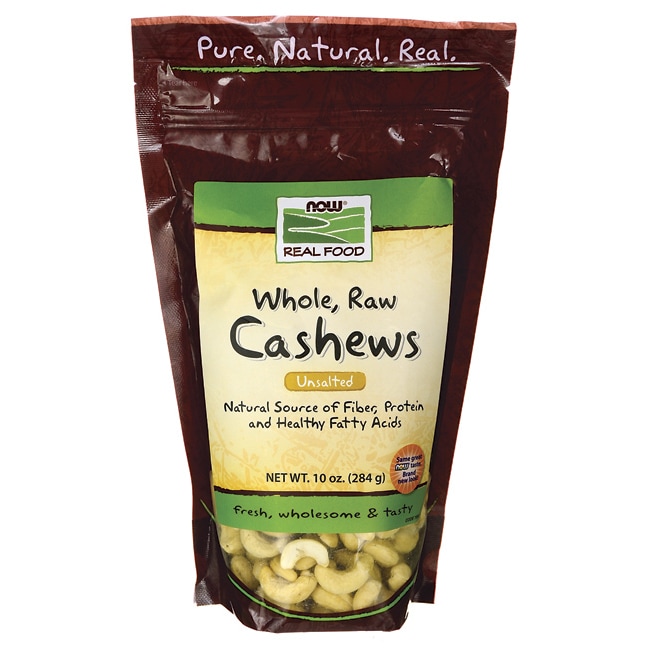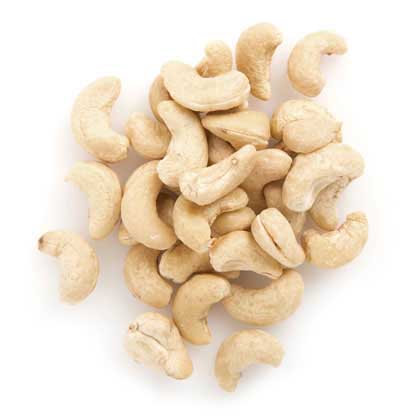
Some of those calories are ultimately passed through the body undigested and flushed down the toilet! Research reveals that up to 15% of the lipid content of whole nuts may be lost in your stool. This means the fat calories in nuts are not entirely absorbed in the gastrointestinal tract. …this is one of the reasons why nuts have been proven to help with weight loss and maintenance”. So where do they go? Nut calories are mostly excreted by your body. “a 1 oz serving may be high in healthy fat and calories, but new research shows that 55-75% of the calories in nuts are not fully absorbed by the digestive tract. Here’s another possibility that I read in the March 2012 issue of Oxygen Magazine: Evidence links regular nut consumption with greater resting energy expenditure 2, which is a fancy way of saying, “nuts increase your metabolism”.ģ. As a result, you’re less likely to overeat at subsequent meals 2.Ģ.
#RAW CASHEW CALORIES PER CUP FULL#
Thanks to their high fiber, fat and protein content, nuts make you feel full and provide you with sustained energy levels. So if we are ingesting nuts and not gaining weight, then where do the nut calories go? I did my homework and uncovered the following theories:ġ. 1How to explain this seeming contradiction? Having studied science, I understand that energy can neither be created nor destroyed. At the same time, epidemiologic data shows that higher nut consumption is not associated with an increased likelihood of weight gain among women. Just 1.5 ounces of unsalted cashews contain 240 calories and 19.5 grams of fat. Key Point: Inattention to portion size is a major contributor to weight gain, regardless of whether the food ingested is healthy.Īlthough nuts provide an excellent source of heart-healthy fats, protein and fiber, they pack a calorie wallop. Walnuts contain more heart-healthy omega-3 fatty acids than any other nut.When you eat slowly, fullness messages are sent to your brain, which requires about 20 minutes to receive this “not hungry anymore” signal.This de-shelling strategy will prevent you from outracing these fullness signals. They also take longer to eat because you must first remove the shell. One ounce (160 calories) represents 47 pistachios nuts. Pistachios are known as the “skinny nut” because they are the lowest calorie nut.Almonds contain more fiber (~3g/ounce) than any other nut.1 oz of raw cashews is approximately 16-18 cashews and represents 160 calories, 12 g fat, 0mg sodium, 9 g carbohydrates, 1 g of fiber, 2 g sugar and 5 g of protein.1 oz of raw almonds is approximately 24 almonds and represents 164 calories, 14.4 g fat, 0mg sodium, 5.6 g carbohydrates, 3.3 g of fiber, 1.4 g sugar and 6 g of protein.


I’ll be honest: One time, I ate half a tub of peanut butter in one day! I was working at the computer and mindlessly noshed on spoonful after spoonful. Nuts and nut butters can be extremely addicting.

For everyone else who eats way more than the suggested portion sizes of nuts-keep reading! Kudos if you can eat a small handful of nuts and then put the bag away. After surveying numerous friends, I realized that very few of us are able to control our nut portions. I have a confession: I go nuts over nuts and nut butter. Despite eating clean, training, and monitoring your carb intake, you're still not losing fat! Let me ask you a question, and be honest: Do you eat too many nuts?


 0 kommentar(er)
0 kommentar(er)
